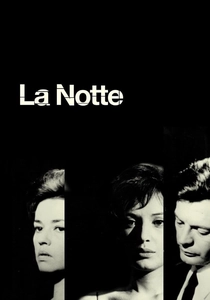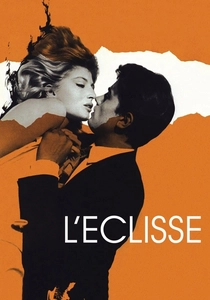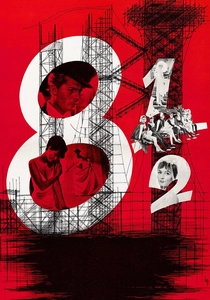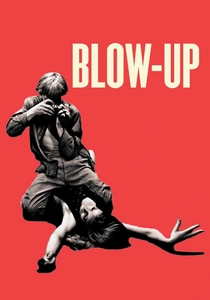If you were captivated by the enigmatic beauty and existential depth of Michelangelo Antonioni's 'L'Avventura' (1960), you're not alone. This article explores 10 films and shows that echo its themes of alienation, visual poetry, and slow-burning mystery. Whether you're a fan of its haunting atmosphere or its philosophical undertones, these recommendations will satisfy your craving for similarly profound cinema.

Hiroshima Mon Amour (1959)
Description: Interweaves personal and historical trauma, exploring memory and forgetting through a fragmented narrative. The film's poetic dialogue and emotional intensity highlight the complexities of human connection and loss.
Fact: It was initially conceived as a documentary about the atomic bomb but evolved into a fictional love story. The film's innovative editing techniques broke new ground in cinema.
 Watch Now
Watch Now 
The 400 Blows (1959)
Description: Follows a young boy's struggles with authority and his search for identity, using a semi-autobiographical approach. The film's raw, naturalistic style and focus on childhood alienation create a deeply personal and poignant narrative.
Fact: The final shot, a freeze-frame of the protagonist's face, is one of the most iconic endings in cinema. It won the Best Director award at the Cannes Film Festival.
 Watch Now
Watch Now 
La Notte (1961)
Description: Explores themes of existential ennui and the disintegration of relationships, with a focus on the emotional emptiness of its characters. The film's slow pacing and contemplative mood mirror the introspective and unresolved nature of its narrative.
Fact: The film was shot in Milan and features a cameo by the famous Italian writer Giovanni Testori. It won the Golden Bear at the Berlin International Film Festival.
 Watch Now
Watch Now 
Last Year at Marienbad (1961)
Description: Challenges conventional narrative structure with its dreamlike, non-linear storytelling and unresolved mysteries. The film's emphasis on memory, time, and the unreliability of human perception creates a haunting, enigmatic atmosphere.
Fact: The screenplay was written in two weeks, and the film's precise, geometric cinematography was highly influential. It won the Golden Lion at the Venice Film Festival.
 Watch Now
Watch Now 
Jules and Jim (1962)
Description: Explores the complexities of a love triangle with a free-spirited, unpredictable woman at its center. The film's innovative editing and playful tone contrast with its underlying themes of passion and tragedy.
Fact: The film's famous bicycle scene was shot without permits, using hidden cameras. It was based on a semi-autobiographical novel by Henri-Pierre Roché.
 Watch Now
Watch Now 
L'Eclisse (1962)
Description: Delves into the alienation and disconnection in modern life, using long takes and sparse dialogue to emphasize the emotional distance between characters. The film's open-ended conclusion leaves much to interpretation, reflecting the uncertainty of human relationships.
Fact: The final sequence, lasting over seven minutes, is famous for its absence of the main characters, focusing instead on the urban environment. It was initially met with mixed reviews but is now considered a masterpiece.
 Watch Now
Watch Now 
8½ (1963)
Description: Blurs the line between reality and fantasy as it follows a director's creative and personal crisis. The film's self-reflexive style and exploration of artistic paralysis resonate with themes of existential uncertainty.
Fact: The title refers to the number of films its director had made by that point (seven features and two shorts). It won the Academy Award for Best Foreign Language Film.
 Watch Now
Watch Now 
The Leopard (1963)
Description: Captures the decline of an aristocratic family during a period of social upheaval, with a focus on the melancholy of change and the passage of time. The film's opulent visuals and introspective tone reflect the grandeur and decay of its setting.
Fact: The ballroom sequence, lasting 45 minutes, is one of the most celebrated scenes in cinema history. The film was drastically cut for its initial U.S. release but later restored to its full length.
 Watch Now
Watch Now 
Red Desert (1964)
Description: Portrays a woman's psychological turmoil amidst an industrialized landscape, using vivid colors and stark compositions to reflect her inner chaos. The film's focus on alienation and the dehumanizing effects of modernity is central to its narrative.
Fact: This was the first color film by its director, and the industrial locations were painted to achieve the desired visual effect. It won the Golden Lion at the Venice Film Festival.
 Watch Now
Watch Now 
Blow-Up (1966)
Description: Examines the elusive nature of truth and perception through the lens of a photographer who may have witnessed a crime. The film's ambiguous storytelling and focus on the unreliability of images create a sense of existential uncertainty.
Fact: The film's iconic park scene was shot in Maryon Park, London, which was later demolished. It was inspired by a short story by Julio Cortázar.
 Watch Now
Watch Now 








